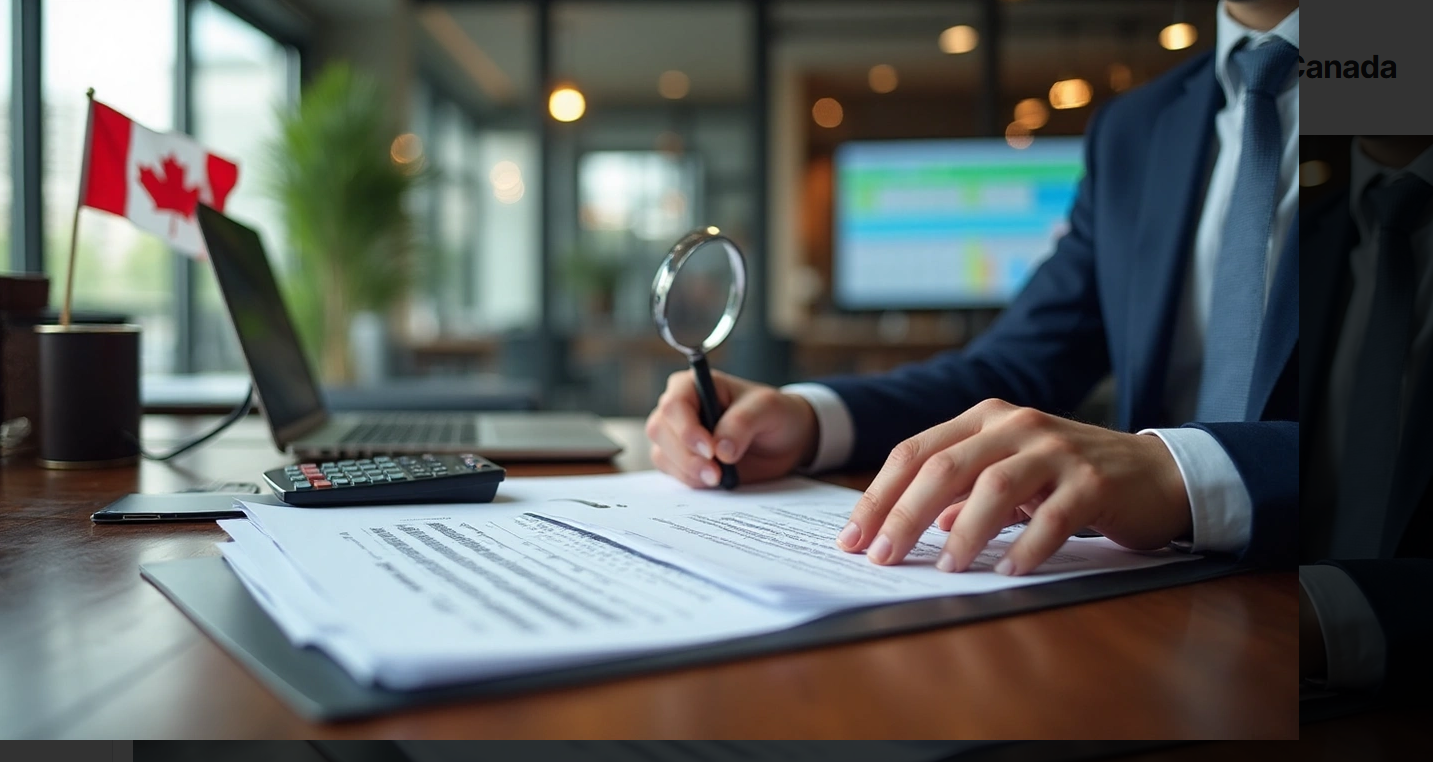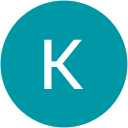You can file your taxes online in Canada without complications or expenses. The CRA reports that about 10% of Canadians don’t file their tax returns each year, with more late filings expected. Late submissions can result in penalties and interest charges that pile up quickly.
The good news is that you can file your return at no cost if you have a simple tax situation. Your refund could arrive in as little as two weeks when you opt for direct deposit. Online filing also lets you know right away that the CRA has accepted your submission, which helps reduce stress during tax season.
Here are the key dates you need to remember: The standard deadline to file your taxes is April 30. Self-employed people have until June 16, 2025 (since June 15 falls on a Sunday). This detailed guide will show you how to file your taxes online for free in Canada. We’ll cover everything from picking NETFILE-certified software to getting the biggest refund possible and steering clear of common errors.
Why Filing Taxes Online for Free Matters
Many Canadians don’t realize how filing taxes on time can greatly affect their money situation. Learning to file taxes online for free in Canada helps you save on preparation fees and sets you up for financial success in several ways.
Avoiding penalties and interest
Late tax filing can get pricey. The Canada Revenue Agency (CRA) charges a 5% penalty on your balance if you file late and owe taxes. You’ll pay an extra 1% for each late month, up to 12 months. Things get worse for repeat late filers – the penalty jumps to 10% of the balance, plus 2% monthly for up to 20 months.
Your unpaid tax balance grows with daily compound interest starting May 1 until you pay it off. These charges add up fast and turn a small tax bill into a much bigger headache. You should file on time even if you can’t pay right away – this saves you from the late-filing penalty.
The bright side? Online filing speeds up the whole process and makes meeting deadlines easier. Free tax software guides you through each step instead of wrestling with paper forms.
Getting refunds and benefits
Tax filing isn’t just about paying up – you often get money back. Many Canadians leave hundreds or thousands of dollars on the table by not filing. Online filing with direct deposit can get your refund to you in two weeks. Paper returns take up to eight weeks.
Filing on time keeps your benefits flowing:
- The Canada Workers Benefit (CWB) offers up to CAD 2,215.44 for singles or CAD 3,816.41 for families in 2024
- GST/HST credits help offset your purchase taxes
- Canada Child Benefit payments can reach CAD 10,850.10 per child for 2024-2025
- Your province might have specific tax credits and benefits
The system automatically checks for these benefits once you file. Late or missed filing can delay or stop your payments.
Improving financial health
Regular tax filing shows you exactly where you stand financially, which helps with money decisions throughout the year. Knowing your tax situation helps you plan your budget better.
Free online tax software spots deductions and credits you might miss. These programs check through 400+ credits and deductions to maximize your savings without needing tax expertise.
Online filing creates a digital record that comes in handy for loan applications, mortgages, or other financial services. Lenders like seeing organized financial records.
BOMCAS Canada can help if you find the process tricky. They’ll guide you through free tax filing to get all your benefits while staying in good standing with the CRA.
Digital filing gives you instant peace of mind. You get immediate confirmation that the CRA received your return, unlike paper forms that could get lost in the mail.
Filing taxes online for free does more than keep you compliant – it’s a smart financial move that helps you dodge penalties, get benefits, and boost your financial health.
Who Qualifies for Free Tax Filing in Canada
You might be surprised to learn that millions of Canadians qualify for free tax filing each year. Learning about your eligibility could save you hundreds of dollars in tax preparation fees and help you get every benefit and credit you deserve.
Low-income individuals and families
The Community Volunteer Income Tax Program (CVITP) helps people with modest incomes file their taxes at no cost. The CRA guidelines say you’ll likely qualify if your family income stays under these thresholds:
| Family Size | Maximum Income |
|---|---|
| 1 person | CAD 48,767.61 |
| 2 persons | CAD 62,701.21 |
| 3 persons | CAD 66,184.61 |
| 4 persons | CAD 69,668.01 |
| 5+ persons | Add CAD 3,483.40 for each additional person |
These income limits are specific to the CVITP program. Most free tax filing options across Canada use them as guidelines too. So if your household makes less than these amounts, you’ll probably qualify for several free filing options.
Students, seniors, and newcomers
Students deal with unique tax situations. They often balance part-time income, tuition credits, and education expenses. Every student should file returns yearly to get eligible refunds and credits like GST, OST, and education amounts. Some tax software companies make it easier – UFile lets post-secondary students file for free whatever their income level, as long as they’ve studied for at least one month during the tax year.
Seniors with modest incomes can visit special tax clinics that cater to their needs. These services do more than just collect taxes – they make sure seniors receive all their entitled refunds, benefits, and credit payments. Many community groups run these free clinics both in-person and online.
Canada’s newcomers face special challenges with their first tax returns. The good news is you can start getting benefits and credits right after arrival, even before filing your first return. This vital financial support helps during your transition to Canadian life. Many tax software providers let newcomers file their first Canadian tax return free. BOMCAS Canada can help if you need support with your Canadian taxes.
Simple vs. complex tax situations
Your tax situation’s complexity matters as much as your income level. A simple tax situation usually means your money comes from:
- Employment income (T4 slips)
- Pension income (T4A slips)
- Government benefits such as CPP, OAS, disability, or social assistance
- RRSPs
- Support payments
- Scholarships or educational grants
- Interest under CAD 1,393.36
Free tax filing might not work for you if you have:
- Business or self-employment income
- Rental property income
- Capital gains
- Employment expenses
- Bankruptcy proceedings
- Farm income
- Investment income exceeding CAD 139.34
Some providers still offer free filing if your total family income stays below CAD 27,867.20, even with complex situations. International students studying in Canada can find special resources on the CRA website.
These details will help you pick the best way to file your taxes online free in Canada and get the maximum refund without extra costs.
Free Tax Filing Options Available in 2025
The Canadian government lets you file your taxes free of charge in 2025 through several different ways. These options have helped millions of Canadians get billions in benefits and credits. A good look at each option will help you pick what works best for you.
Community Volunteer Income Tax Program (CVITP)
CVITP matches qualified people with trained volunteers who do tax returns for free. This program helps people with modest incomes and simple tax situations. Last year’s numbers tell quite a story – 18,090 volunteers worked with 3,520 organizations to submit more than 980,000 tax returns for over 857,000 people. Thanks to their work, eligible Canadians received more than CAD 3.20 billion in benefits and credits.
You can get CVITP help if your income stays under certain limits: CAD 48,767.61 for singles, CAD 62,701.21 for couples, plus extra room for dependents.
Your tax situation needs to be simple too. You won’t qualify if you have:
- Business or self-employment income
- Rental income and expenses
- Interest income over CAD 1,393.36
- Capital gains or losses
- Bankruptcy filings
- Tax returns for deceased individuals
CRA free tax clinics
The CRA works with communities across Canada to run free tax clinics. While most clinics run from March to April, some stay open all year. Before you head to a clinic, make sure you bring:
- Tax information slips (T4, T4A, etc.)
- Receipts for deductions
- Social Insurance Number
- Identification
- Previous Notice of Assessment if you have it
You can choose from four types of clinics:
Walk-in clinics: Just show up during open hours – it’s first-come, first-served with no appointment needed.
Drop-off clinics: Leave your documents during open hours and pick up your completed return later. Don’t forget ID when you come back.
In-person appointments: Book a time to sit down with someone who’ll complete your return.
Virtual appointments: Talk to a volunteer by video or phone at a scheduled time. People in northern communities can get special virtual help, sometimes from volunteers outside their province or territory.
The CRA’s online directory can help you find nearby clinics, and it’s always getting updated with new locations. BOMCAS Canada can help you figure out which option suits you best.
Free NETFILE-certified software
If you’d rather do your taxes yourself, several NETFILE-certified software options let you file for free. The CRA checks these programs every year to make sure they’re secure and follow tax rules.
Many tax software companies offer free versions to people with modest incomes and simple taxes. Each program has its own rules about who qualifies, usually based on:
- Income levels
- Where you live
- How complex your taxes are
These programs are great because they can use Auto-fill My Return to grab information the CRA already has, like T4s and T5s. This makes everything faster and cuts down on mistakes.
Tax clinic volunteers often use these same programs. Some CVITP volunteers can even access Auto-fill to get your tax slips right from CRA systems.
SimpleFile is new for 2025. The CRA is sending about 2 million invitations to people with lower incomes, giving them a quick and secure way to file. If you get one of these letters, you can use this simpler method to do your return.
Now that you know your free filing options, you can pick what works best with your comfort level, tech skills, and tax situation. Filing taxes is the key to getting the benefits and credits you deserve, no matter which method you choose.
How to Choose the Right Free Tax Software
Your tax filing process becomes smooth and stress-free when you pick the right tax software. Canadian taxpayers have many free options. Let’s look at what makes each one different so you can pick what works best for you.
Online vs. downloadable software
Free tax filing comes in two main types: web-based applications and software you download. Web platforms like TurboTax Free, Wealthsimple Tax, and UFileFREE work right in your browser with no installation needed. These tools save your work automatically, so you can start now and finish later. You can also switch between devices naturally.
GenuTax and other downloadable options need installation on your computer. GenuTax works only on Windows, which rules it out for Mac users. Downloaded software often has better features for tricky tax situations, but you’ll have to handle your own backups and updates.
Your internet connection should be the first thing you think about when picking between these choices. Web-based tools just need steady internet while you work, but downloaded software works fine offline once it’s on your computer.
Mobile app availability
Filing taxes from your phone or tablet can make life much easier. TurboTax has apps for both iOS and Android, so you can “do your taxes anytime, anywhere”. This means you can work on your return whenever you have a few minutes free.
H&R Block and StudioTax also offer mobile apps. These apps work together with their website versions. You can start on one device and pick up where you left off on another.
Look carefully at what the apps can do before you choose one. Some might not have all the features of their desktop versions. Check the app store reviews to see how well they work.
Support and ease of use
Tax filing can get complicated, so good support matters. Most free tax software starts with questions that guide you through everything, so you don’t need to be a tax expert. The help you get varies quite a bit between different providers.
TurboTax users can get help from product specialists and other users in community forums. Their experts are ready to help during tax season (February 24 to April 30, 2025) – in English from 9 a.m. to midnight ET, and in French from 9 a.m. to 9 p.m. ET.
UFile gives you free phone support, but long-distance charges might apply. H&R Block offers immediate help from tax experts, and you can pay extra for priority support and audit protection.
BOMCAS Canada can help if you want more guidance with your tax filing process.
Security and CRA certification
Security must come first when you’re handling financial information. Make sure your software has NETFILE certification from the Canada Revenue Agency for this tax year. This tells you the software can properly format and send your return electronically.
The CRA lists all certified software providers on their website in random order each year. This certification mainly checks if the software works with NETFILE, not how secure or user-friendly it is.
The big providers take security seriously. TurboTax encrypts stored information and uses TLS encryption to send your return to the CRA. H&R Block says they keep data “protected with the latest encryption technologies”.
The perfect free tax software balances your tech comfort level, need for mobility, support requirements, and security needs. Looking at all these factors helps you find the right tool to file your Canadian taxes online for free.
Step-by-Step Guide to File Taxes Online for Free
Filing your taxes electronically needs a systematic approach that will give a precise result and maximize your potential refund. These five steps will help you complete your tax return without spending any money.
1. Set up your CRA My Account
You need to register for a CRA My Account first—a secure portal that gives you access to your tax information and makes electronic filing possible. The registration process requires:
- Your Social Insurance Number (SIN)
- Your date of birth
- Amounts you reported on your most recent tax return (within the last 2 years)
Registration works through a CRA user ID and password or through a Sign-in Partner with your online banking credentials. Your Canadian passport, driver’s license, or provincial photo ID can speed up the process. After registration, you’ll get a security code by mail within 10 business days to finish setting up your account.
Adding Multi-Factor Authentication (MFA) creates an important security layer. You can choose between an authenticator app, phone verification, or a passcode grid.
2. Gather your tax documents
Good organization of your tax documents helps catch everything important. Here’s what you need to sort:
- Personal information: SIN, address, date of birth
- Income documentation: T4s, T5s, and other income slips
- Deduction receipts: Medical expenses, charitable donations, childcare costs
- Previous tax information: Last year’s Notice of Assessment, RRSP contribution limits
CRA’s Auto-fill feature can automatically get many documents when you’re ready to file. Check your CRA My Account first for any digital tax slips or information the government has on file.
3. Choose a NETFILE-certified software
CRA tests and certifies tax software each year. Electronic filing for 2025 starts February 24, 2025, and stays open until January 30, 2026.
The CRA website lists all NETFILE-certified free tax software options. Your software must have official NETFILE certification to submit returns electronically. Features vary between products, but all certified options can calculate and file your return electronically.
4. Enter your tax information
After picking your software, you’ll need to:
- Create an account with your chosen tax software
- Use the Auto-fill My Return feature (if available) to import information directly from CRA
- Manually enter any additional information not captured by Auto-fill
- Review all entries carefully before proceeding
Most tax software guides you through questions to help find potential deductions or credits. BOMCAS Canada offers support if you run into any issues while filing your taxes in Canada.
5. Submit your return via NETFILE
The last step is submitting through NETFILE—CRA’s electronic filing system. NETFILE lets you send your return directly to CRA with a few clicks.
You’ll get an immediate confirmation with your CRA transmission number as proof of filing. This confirmation shows your return arrived safely, unlike paper returns that might get lost in transit.
Direct deposit can accelerate your refund, usually arriving in about 8 business days instead of 8 weeks for paper returns. File before April 30, 2025 (or June 16, 2025 if you’re self-employed) to avoid penalties.
A digital copy of your completed return and confirmation number stored securely will make next year’s filing easier.
Important Tax Deadlines and What Happens If You Miss Them
Tax deadlines can make or break your financial year. Missing these important dates will affect your wallet through penalties and interest that pile up faster than expected.
April 30, 2025: General deadline
The Canada Revenue Agency has set April 30, 2025, as the final day for most Canadians to file their income tax returns. This date serves as both the filing and payment deadline. You must pay any taxes you owe by this date to avoid interest charges.
Filing on time matters even if your return feels overwhelming. BOMCAS Canada’s experts can help you through free filing options before the deadline if you struggle with the process.
June 15, 2025: Self-employed deadline
Self-employed taxpayers get extra time to prepare their returns. The CRA will accept returns filed by June 16, 2025, as on time since June 15 falls on a Sunday. This extension recognizes that self-employed individuals often face more complex tax situations.
Remember that any taxes owed must still be paid by April 30, 2025. This creates a situation where you might file after the payment deadline during tax season. Interest starts adding up on unpaid amounts from May 1, whatever your filing deadline might be.
Late filing penalties and interest
Missing these deadlines triggers financial penalties. The late-filing penalty equals 5% of your unpaid tax due on the filing deadline. You’ll pay an additional 1% of this unpaid amount for each full month your return is late, up to 12 months.
Repeat late filers face steeper consequences. Your penalty doubles to 10% of the balance owing if the CRA charged you a late-filing penalty in the past three tax years and sent a formal demand for your return. Plus, you’ll pay 2% for each complete month your return is late, up to 20 months.
The CRA charges compound daily interest on unpaid tax amounts starting May 1. These interest rates change quarterly, making your tax debt grow faster.
Good news if you expect a refund or don’t owe taxes – you won’t face late-filing penalties. Your main risk becomes delayed access to potential refunds and benefits.
File your return on time to avoid hefty late-filing penalties even if you can’t pay your full tax bill. The CRA can help you set up a payment arrangement after filing to settle your balance gradually.
Tips to Maximize Free Filing Tools and Avoid Mistakes
Smart tools and practices can streamline your tax filing experience beyond just picking the right software. The right approach saves time and helps you avoid problems later.
Use Auto-fill My Return
The CRA’s Auto-fill my Return service stands out as one of their best breakthroughs for online tax filing. This secure feature pulls information directly from CRA records into your tax software. Millions of Canadians have employed this time-saving tool over the last several years.
The best time to use Auto-fill is after mid-March because most employers and financial institutions submit their tax information by then. You can import several documents including T4s, T3s, T5s, RRSP contribution receipts, and tuition certificates.
T3 and T5013 slips might not show up until late March. RRSP contributions made during 2024’s first 60 days could take until May 2024 to appear. You should reach out to the issuer if information is missing.
Double-check deductions and credits
You are responsible for your return’s accuracy. A careful review of all fields after using Auto-fill will help you spot any missing or incorrect information.
Joint investments need special attention. When Auto-fill imports a T5 slip with multiple names, you must specify your percentage based on your contribution. BOMCAS Canada can help you identify eligible deductions or credits while filing your taxes.
Keep digital copies of receipts
Digital copies are the foundations of good record-keeping since paper receipts fade over time. The CRA accepts properly digitized receipts as valid documentation.
Creating proper digital records requires:
- A scanner or mobile app like Adobe Scan to capture clear images
- Files saved in PDF format for easy access
- Multiple storage locations—both physical drives and online storage
This approach prepares you for CRA documentation requests or potential audits.
Provincial Tax Credits You Shouldn’t Miss
Tax credits from provinces give you great opportunities to lower your tax burden and maybe even boost your refund. These region-specific benefits often go unnoticed but can put hundreds or thousands of dollars back in your pocket.
Ontario Trillium Benefit
The Ontario Trillium Benefit (OTB) combines three credits: the Ontario Energy and Property Tax Credit, Northern Ontario Energy Credit, and Ontario Sales Tax Credit. You must be an Ontario resident on December 31 of the previous year and meet one requirement: pay rent/property tax, pay home energy costs, or be 19+ years old. This benefit can provide much financial relief throughout the year, so even modest-income earners should apply.
B.C. Climate Action Tax Credit
British Columbia residents receive quarterly payments through this credit that helps offset carbon taxes. Single adults can get up to $447 annually while families may receive up to $894, based on family size and income. The system automatically calculates this credit when you file taxes and claim B.C. residency.
Quebec Solidarity Tax Credit
Quebec’s complete credit system helps lower-income residents with housing costs, living in northern villages, and QST (Quebec Sales Tax) offset. You need to be 18+ and live in Quebec as of December 31. Keep in mind that both spouses must file tax returns to get this benefit, whatever their income.
Other regional benefits
The provinces offer many more credits like:
- Manitoba’s Education Property Tax Credit
- Alberta’s Carbon Tax Rebate
- Nova Scotia’s Affordable Living Tax Credit
BOMCAS Canada are a great way to get support with filing your taxes, especially when you have questions about provincial credit eligibility.
Conclusion
Canadian taxpayers can save more than just preparation fees by filing their taxes online for free. In this piece, we explore how filing on time helps you avoid penalties that can get pricey and ensures you get all your benefits and refunds. The CRA now makes tax filing available to everyone through several free options that match different needs.
You can choose from the Community Volunteer Income Tax Program, free tax clinics, or NETFILE-certified software. These options help you meet your tax obligations without spending money. On top of that, tools like Auto-fill My Return cut down the time you spend gathering information and make everything smoother.
Note that most Canadians must file by April 30, 2025, while self-employed individuals have until June 16, 2025. Missing these dates leads to penalties that add up fast and can turn a small tax bill into a major financial headache.
You might be missing out on valuable provincial credits like Ontario’s Trillium Benefit, B.C.’s Climate Action Tax Credit, or Quebec’s Solidarity Tax Credit. These local benefits could return hundreds or maybe even thousands of dollars just by filing the right way.
Tax filing might look overwhelming at first, but the free resources mentioned here make it easy if you have a simple tax situation. Your refund usually arrives within two weeks when you use direct deposit – much faster than paper returns.
BOMCAS Canada can help if you run into any problems with free tax filing options. Their team will make sure you get all possible benefits while staying in good standing with the CRA.
The bottom line? Don’t miss out on money by skipping this crucial financial task. Filing your taxes online for free is a simple way to boost your financial health and follow Canadian tax laws.
Key Takeaways
Filing taxes online for free in Canada is accessible to millions of Canadians and can significantly impact your financial well-being. Here are the essential insights to help you navigate the process successfully:
• Multiple free options exist for eligible Canadians: Community Volunteer Income Tax Program (CVITP), CRA free tax clinics, and NETFILE-certified software serve different needs and income levels.
• Income thresholds determine eligibility: Singles earning under $48,768 and couples under $62,701 typically qualify for free filing services, with higher limits for larger families.
• Critical deadlines must be met: April 30, 2025 for most Canadians and June 16, 2025 for self-employed individuals—missing these triggers 5% penalties plus monthly interest.
• Auto-fill My Return saves time and reduces errors: This CRA feature automatically imports tax slips and information, streamlining the filing process significantly.
• Provincial tax credits offer substantial savings: Ontario Trillium Benefit, B.C. Climate Action Tax Credit, and Quebec Solidarity Tax Credit can provide hundreds to thousands in additional refunds.
• Digital filing accelerates refunds: Online submissions with direct deposit deliver refunds in approximately 8 business days versus 8 weeks for paper returns.
By leveraging these free resources and following proper procedures, you can avoid costly penalties while maximizing your refund and accessing valuable government benefits you’re entitled to receive.
FAQs
Q1. Who is eligible to file taxes online for free in Canada? Canadians with modest incomes and simple tax situations are generally eligible. This includes individuals earning under $48,768 and couples under $62,701 annually, with higher thresholds for larger families. Students, seniors, and newcomers to Canada may also qualify regardless of income.
Q2. What are the key deadlines for filing taxes in Canada? The general deadline for most Canadians is April 30, 2025. Self-employed individuals have until June 16, 2025 to file their returns. However, any taxes owed must still be paid by April 30, 2025, to avoid interest charges.
Q3. How can I maximize my tax refund when filing for free? Utilize the Auto-fill My Return feature to ensure all income is reported accurately. Double-check for all applicable deductions and credits, including provincial benefits like the Ontario Trillium Benefit or B.C. Climate Action Tax Credit. Keep digital copies of receipts for potential audits.
Q4. What happens if I miss the tax filing deadline? Late filing can result in penalties of 5% of your balance owing, plus 1% for each month your return is late, up to a maximum of 12 months. Interest also begins accumulating on any unpaid tax amounts starting May 1. If you expect a refund, there are no penalties, but you may delay access to benefits.
Q5. How quickly can I receive my tax refund when filing online? When filing online and using direct deposit, you can typically receive your refund in as little as 8 business days. This is significantly faster than the 8 weeks it may take for paper returns to be processed.










 View Our Location
View Our Location





 181 Meadowview Bay, Sherwood Park, AB T8H 1P7, Canada (Online Clients Only)
181 Meadowview Bay, Sherwood Park, AB T8H 1P7, Canada (Online Clients Only)